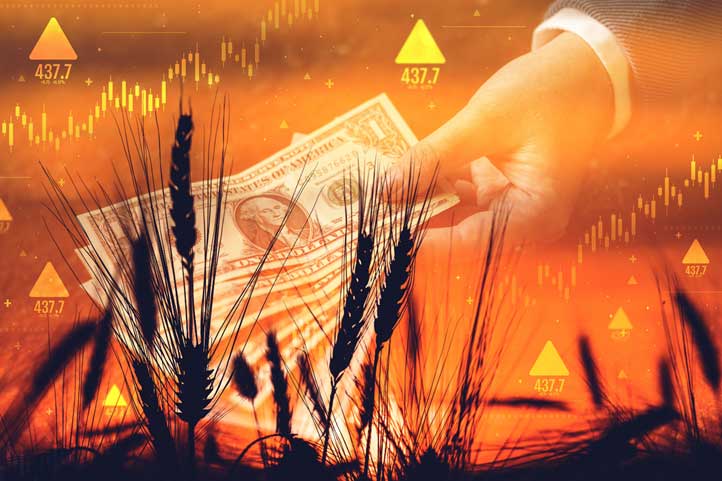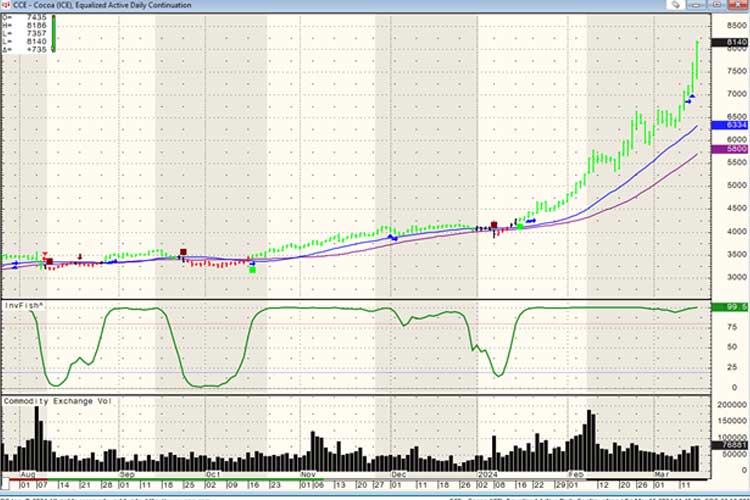 Trading commodity futures is an essential activity that shapes the global economy, influencing prices and availability of basic goods and services worldwide. This type of trading offers a significant opportunity for investors to hedge against price volatility, diversify their investment portfolios, and capitalize on changes in the prices of commodities such as oil, gold, agricultural products, and more. Within this dynamic market, e-Futures.com has established itself as a beacon of reliability, innovation, and customer satisfaction, a testament to its 36 years of excellence in the commodities trading industry.
Trading commodity futures is an essential activity that shapes the global economy, influencing prices and availability of basic goods and services worldwide. This type of trading offers a significant opportunity for investors to hedge against price volatility, diversify their investment portfolios, and capitalize on changes in the prices of commodities such as oil, gold, agricultural products, and more. Within this dynamic market, e-Futures.com has established itself as a beacon of reliability, innovation, and customer satisfaction, a testament to its 36 years of excellence in the commodities trading industry.

E-Futures International: A Legacy of Excellence in Commodities Trading
For over three and a half decades, e-Futures.com has been at the forefront of transforming commodity futures trading. Its long-standing presence in the market is not just a reflection of its durability but also its adaptability and commitment to providing top-notch trading solutions to its clients. This enduring success is highlighted by its remarkable 5 out of 5-star rating on TrustPilot, an accolade that speaks volumes about its credibility, customer service, and the quality of its trading platforms.
E-Futures International’s trading platform, known as E-Futures International, is a shining example of the company’s dedication to innovation and customer-centric solutions. This free futures trading platform is designed to cater to both novice and experienced traders, offering a comprehensive suite of tools that are intuitive, powerful, and customizable to meet individual trading needs and strategies.
Trading Commodity Futures with E-Futures International
The act of trading commodity futures involves buying and selling contracts for the future delivery of physical goods like metals, energy, and agricultural products. Traders engage in this activity for various reasons, including speculation on future price movements, hedging against price volatility, and portfolio diversification. E-Futures International provides an ideal platform for all these activities, thanks to its advanced features, real-time data analytics, and user-friendly interface.
Key Features of E-Futures International
- Advanced Charting Tools: E-Futures International offers advanced charting capabilities that allow traders to analyze market trends, spot trading opportunities, and make informed decisions. These tools are highly customizable, enabling traders to set up their charts according to their trading preferences.
- Comprehensive Market Data: Access to real-time market data is crucial for successful trading. E-Futures International provides comprehensive market data, including price quotes, market depth, and historical data, ensuring that traders have all the information they need at their fingertips.
- Robust Order Execution: The platform is designed for fast and reliable order execution, minimizing slippage and ensuring that traders can enter and exit positions at their desired price points.
- Risk Management Tools: E-Futures International includes a variety of risk management tools that help traders manage their exposure and protect their investments. These tools include stop-loss orders, limit orders, and real-time account monitoring.
- Customizable Interface: Recognizing that no two traders are the same, E-Futures International offers a highly customizable interface. Traders can arrange and resize windows, choose from various layout themes, and save their settings for future sessions, creating a personalized trading environment that suits their individual style.
The Importance of a Reliable Trading Partner
In the complex and often volatile world of commodity futures trading, having a reliable trading partner is indispensable. E-Futures.com’s stellar reputation, underscored by its 5-star rating on TrustPilot, demonstrates its commitment to providing traders with a secure, transparent, and efficient trading environment. This reputation is built on the pillars of excellent customer service, a robust trading platform, and a wealth of educational resources that empower traders to make informed decisions.
36 Years of Innovation and Customer Satisfaction
E-Futures.com’s 36 years in the business reflect a journey of continuous innovation and a deep understanding of the evolving needs of commodity traders. This experience has enabled the company to refine its offerings, stay ahead of industry trends, and maintain a loyal customer base that trusts e-Futures.com for their trading needs. The longevity of the company also provides traders with the assurance that they are dealing with an established, financially stable entity.
The Role of Trust in Commodities Trading
Trust is a critical component in the world of trading commodities. Traders need to have confidence in the integrity of the market, the security of their funds, and the reliability of their trading platform. E-Futures.com’s exemplary rating on TrustPilot is a testament to the company’s dedication to upholding the highest standards of trust and transparency in every aspect of its operations. This level of trust not only attracts new clients but also fosters long-term relationships with existing traders who value the security and reliability that e-Futures.com offers.
E-Futures Trading: Empowering Traders Worldwide
The world of trading commodity futures is both challenging and rewarding. With the right tools, knowledge, and trading partner, traders can navigate this dynamic market with confidence. E-Futures International, powered by e-Futures.com, represents the pinnacle of trading platforms, offering a blend of advanced technology, comprehensive market insights, and unparalleled customer support. Whether you’re interested in trading futures, trading commodities, or exploring the vast landscape of commodities trading, E-Futures International provides a solid foundation for success.
In conclusion, e-Futures.com, with its 36-year legacy, 5-star TrustPilot rating, and cutting-edge E-Futures International trading platform, stands out as one of the leaders in the commodity futures trading industry. Offering an unbeatable combination of reliability, innovation, and customer satisfaction, e-Futures.com is the go-to choice for traders looking to maximize their trading potential. As the global economy continues to evolve and the commodities market with it, e-Futures.com remains committed to empowering traders with the tools, knowledge, and support they need to have in the exciting world of trading commodity futures.
Ready to start trading futures? Call US 1(800)454-9572 – Int’l (310)859-9572 email info@cannontrading.com and speak to one of our experienced, Series-3 licensed futures brokers and start your futures trading journey with E-Futures.com today.
Disclaimer – Trading Futures, Options on Futures, and retail off-exchange foreign currency transactions involves substantial risk of loss and is not suitable for all investors. Past performance is not indicative of future results. You should carefully consider whether trading is suitable for you in light of your circumstances, knowledge, and financial resources. You may lose all or more of your initial investment. Opinions, market data, and recommendations are subject to change at any time.
**This article has been generated with the help of AI Technology. It has been modified from the original draft for accuracy and compliance.
***@cannontrading on all socials.







